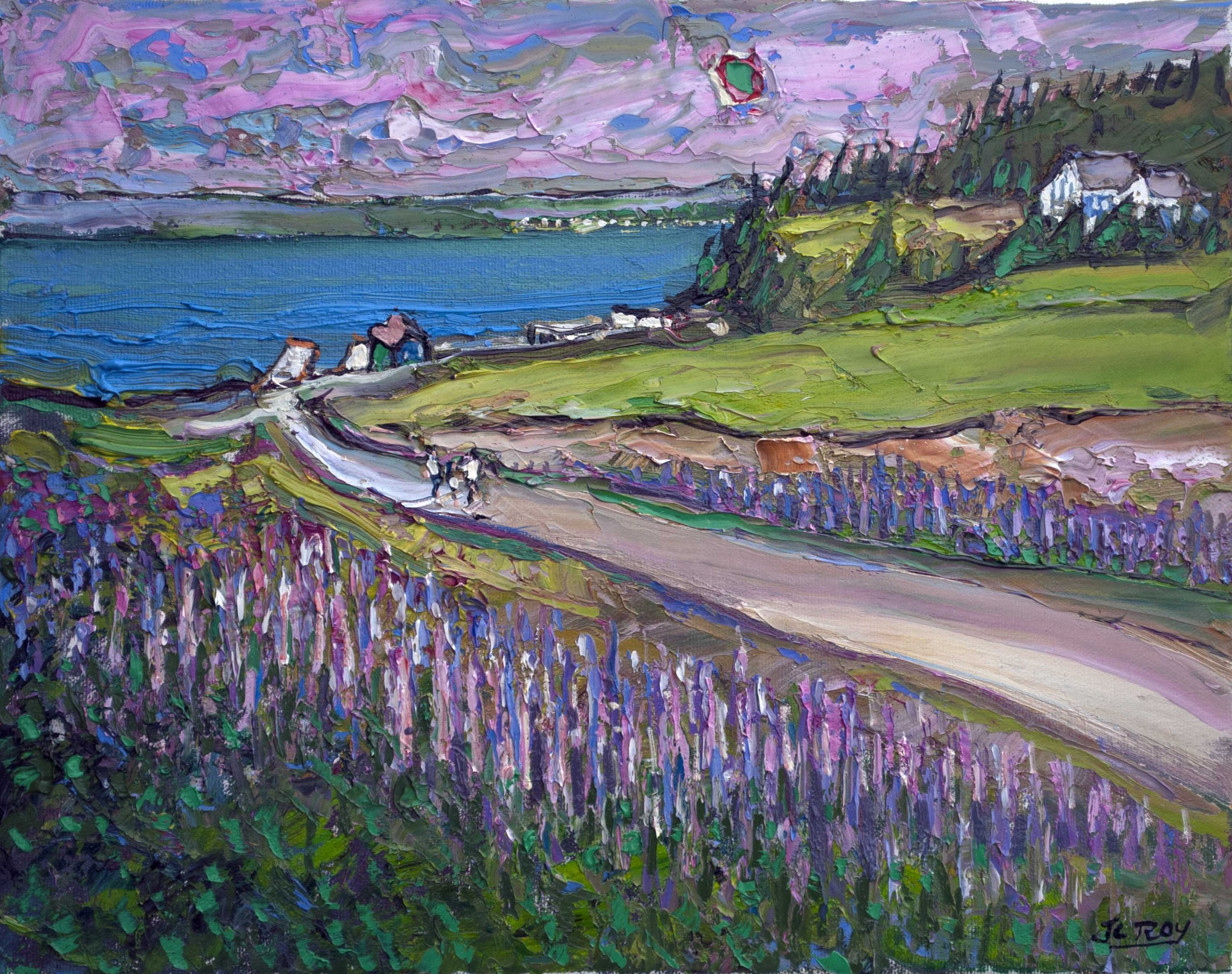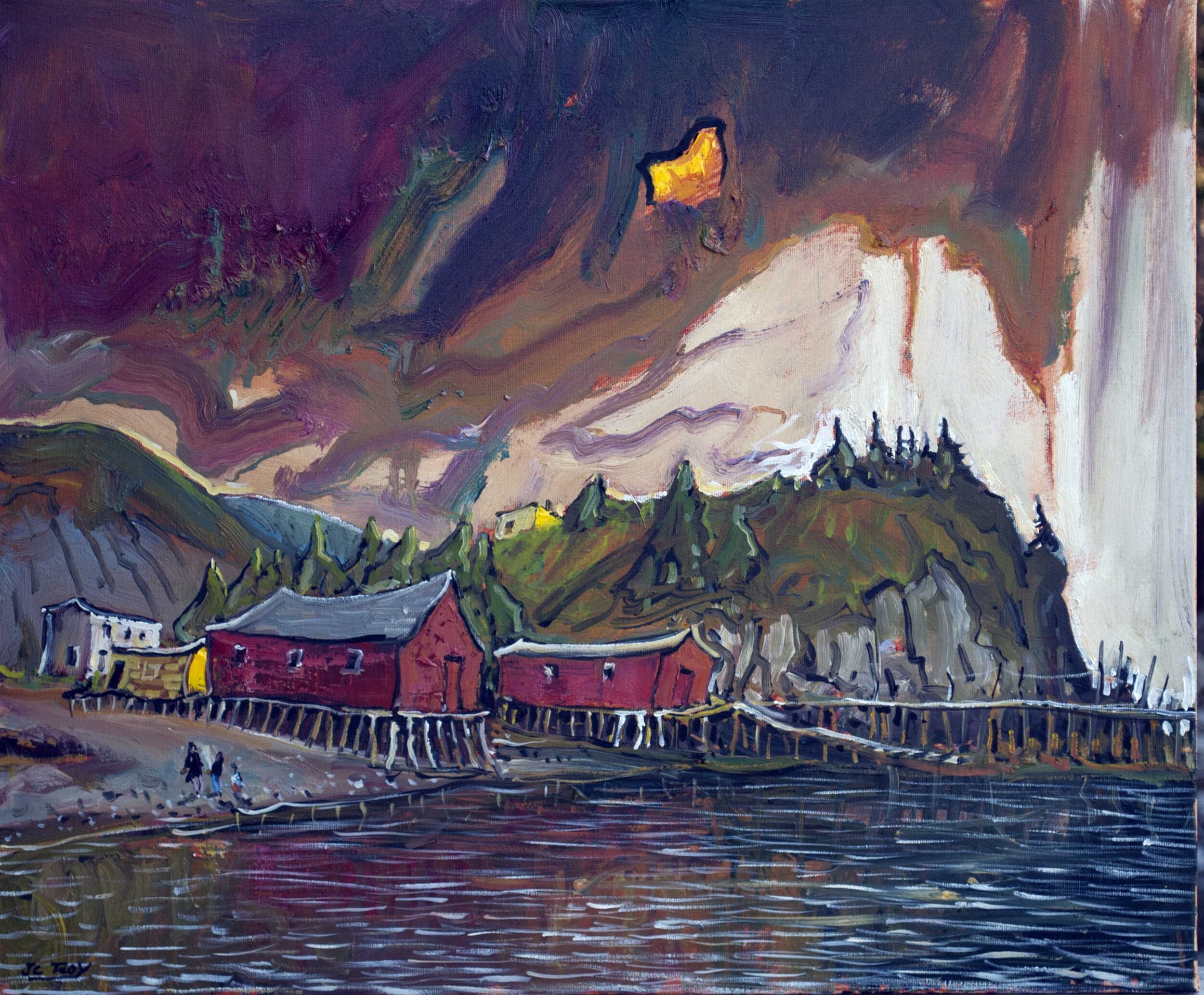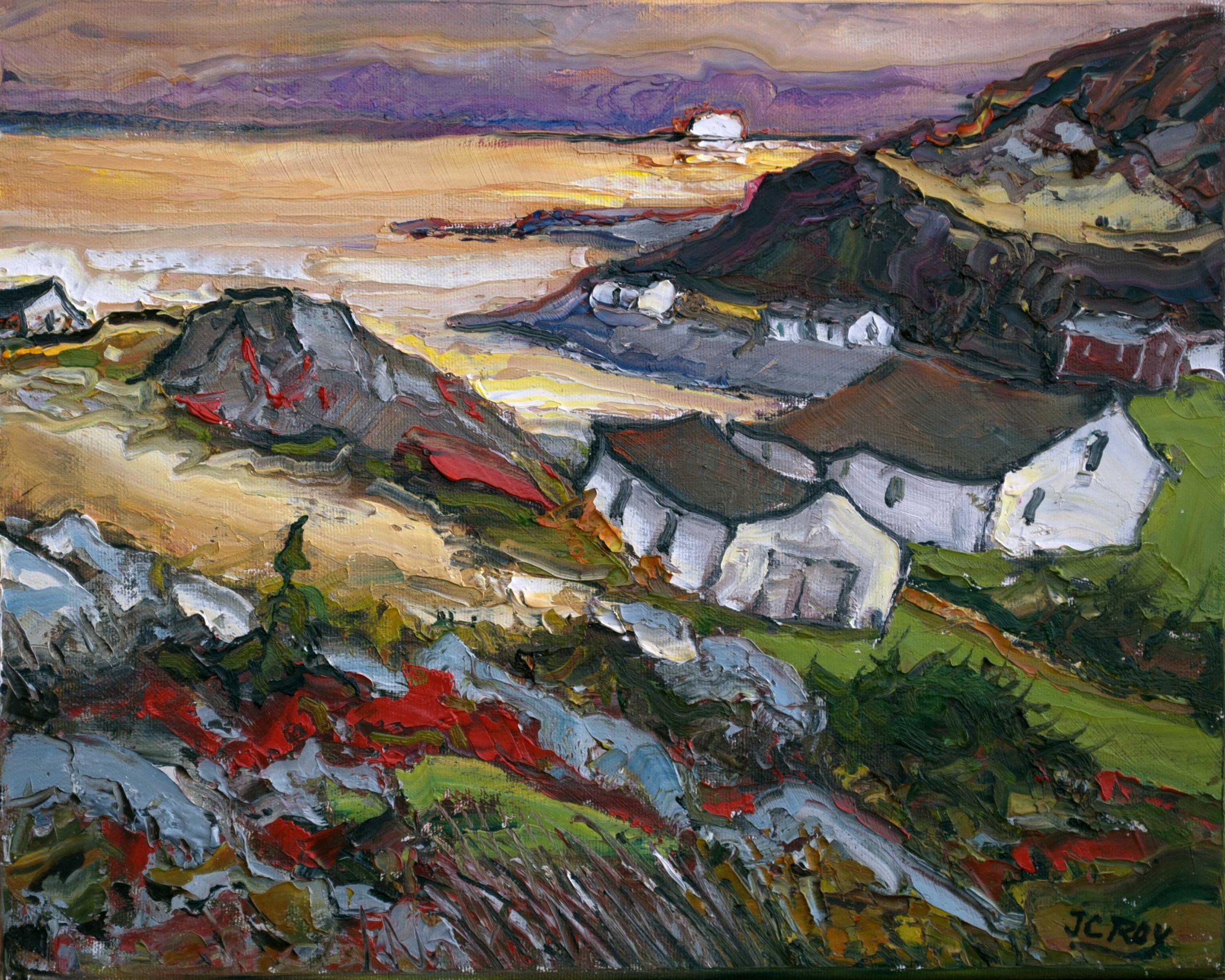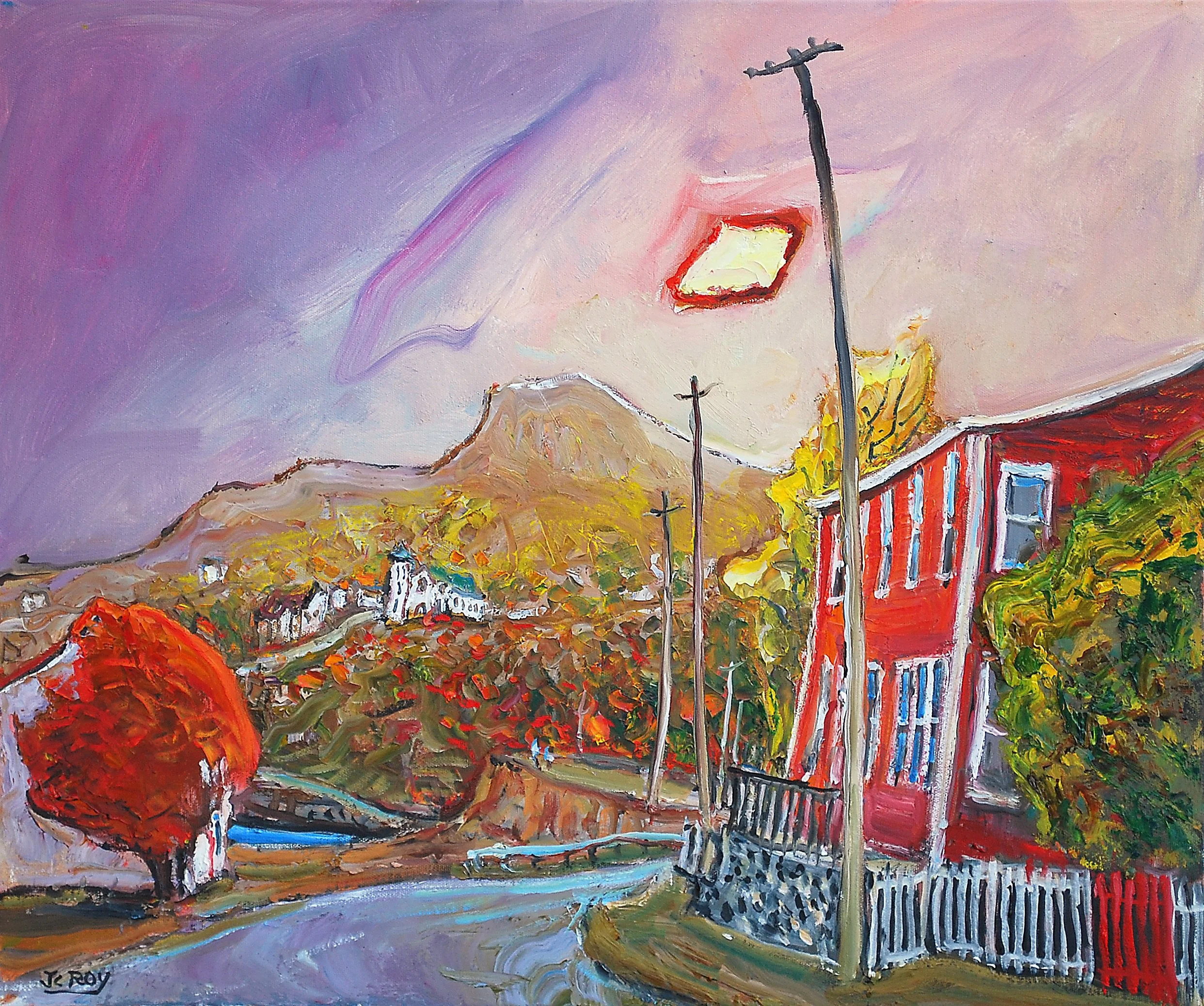Jean Claude Roy
Jean Claude Roy was born in Rochefort-sur-Mer on the west coast of France in 1948. He knew by the age of seven that he would be an artist, and he was encouraged by his grandfather, a farmer of modest means, who bought paintings at auctions. At the age of sixteen, Jean Claude attended merchant-marine training and took his first job as an apprentice electrician on a cable-repair boat. Several years at sea followed, with much time spent in the port of St John’s, Newfoundland, where his interest in art turned to landscapes. In 1971 he immigrated to Newfoundland, and for the next ten years worked as a marine electrician by day and as an artist by night. He attended art classes for only two lessons and is essentially self-taught. By 1973 he was selling in local galleries, and he held his first solo exhibition in 1974. Subsequently, Jean Claude was featured in two exhibitions at the provincial art gallery, and his representation in galleries in other parts of Canada began.
In 1982 Jean Claude returned to France to establish himself as an artist in his own country, while rebuilding the stone farmhouse in which he had grown up and cultivating his orchard. He maintained his ties with Newfoundland, and since 1994 he has divided his time between the two countries.
Jean Claude describes his style as “expressionist—colourist,” working mostly with oils and a palette knife. A major characteristic of his landscapes has been the presence of his unique rendering of the sun. One day while painting in 1989, after having stared at the sun for too long, he looked back down at his canvas to see a black spot where the sun had been, and he added this rounded, blackened sun to the canvas. He found that the inclusion of the sun added light to the landscape below. Throughout the years, while the sun has taken on other colours and shapes, Jean Claude’s signature sun has now become an important part of the composition of each and every work.
Jean Claude is one of the rare artists who paints almost exclusively on site, and because he paints every day, he sometimes finds himself faced with rain, wind, or snow. For him, a painting is a page in his diary, and each painting reflects not only the atmosphere of the place, but also the people he meets along the way.
Between 2004 and 2010, Jean Claude and his wife, Christina Benedict, developed and designed the “French Shore Tapestry,” a 220-foot-long work of art and craft embroidered by women from the community of Conche in northern Newfoundland.
In 2011, Breakwater Books published Fluctuat Nec Mergitur, a 480-page book that was the culmination of forty-five years of painting on Newfoundland, containing a painting of every community on the island. He and bookbinder Brian Roberts designed and created a special edition that embedded a unique original oil painting into the cover of each copy.
In 2017, Breakwater Books published the companion volume, Terra Magna, including paintings from his extensive travels in Labrador over the past ten years.
He has been the subject of four documentaries: “Sun in my Eyes” (Springwater Productions, 2001); “Phantoms of the French Shore” (Barbara Doran and Jerry McIntosh Productions, 2012); “Tous les Jours” (Nicholas Mullins Productions, 2019); and “Terra Magna” (Nicholas Mullins Productions, 2024).
He has been a member of La Maison des Artistes, the French association of professional artists, since 1988. Considered one of the major interpreters of the Newfoundland landscape, Jean Claude’s paintings are found in both private and public collections in North America and Europe; he is represented in galleries in Canada, the United States, and France.
In 2023, Jean Claude was awarded the Order of Newfoundland and Labrador.






















































































